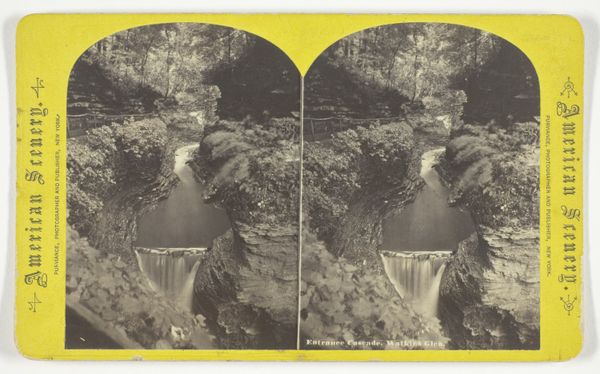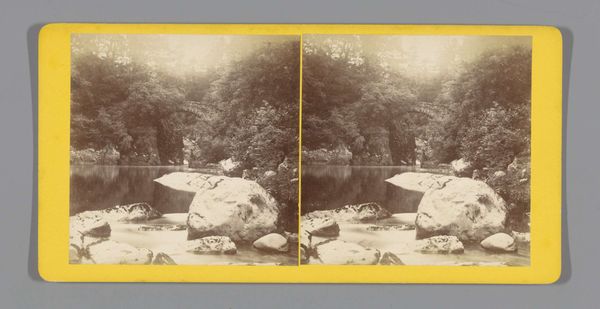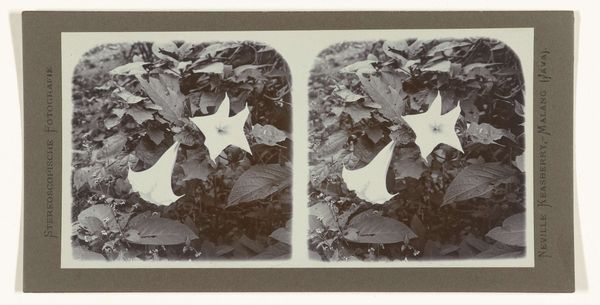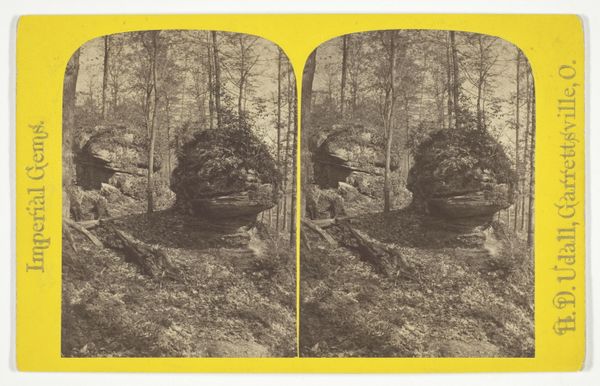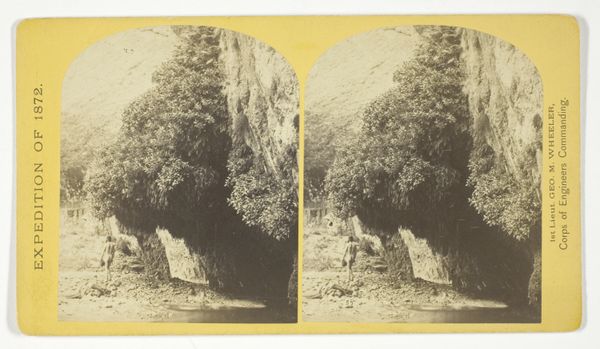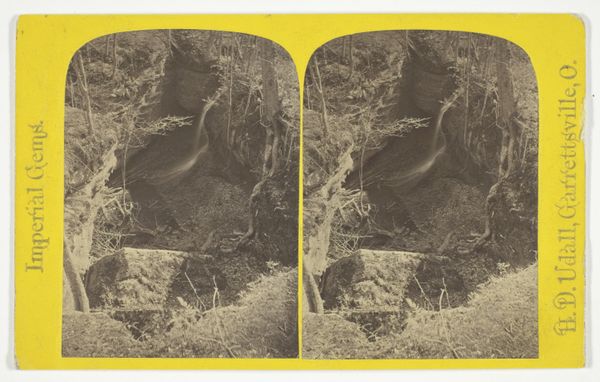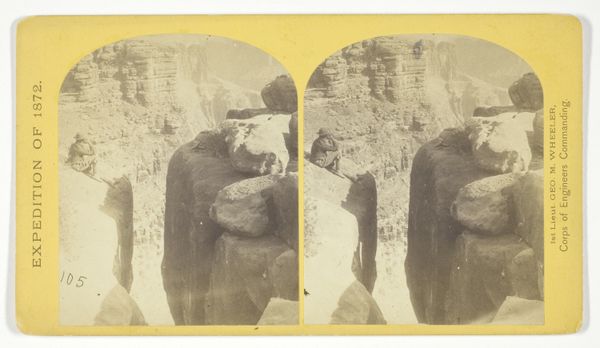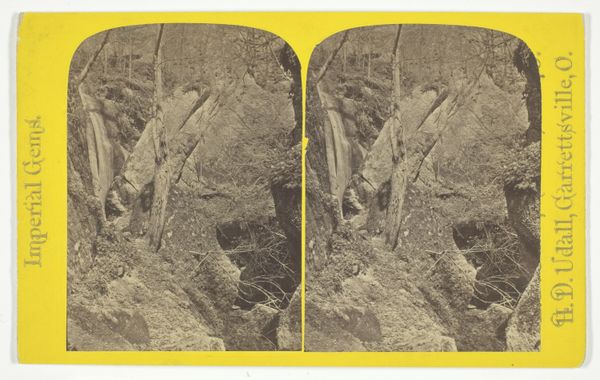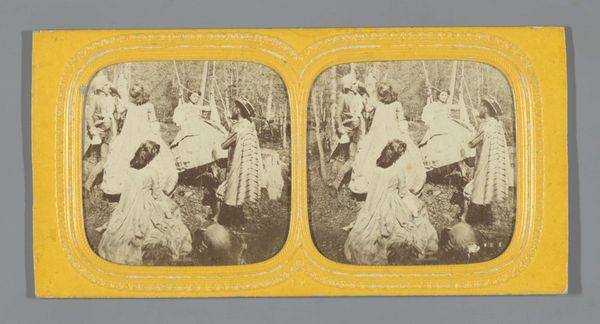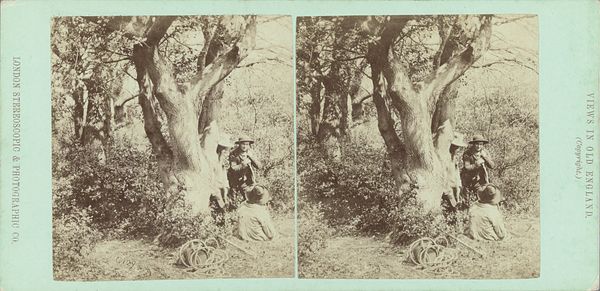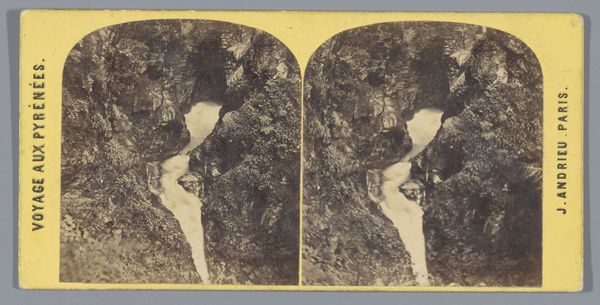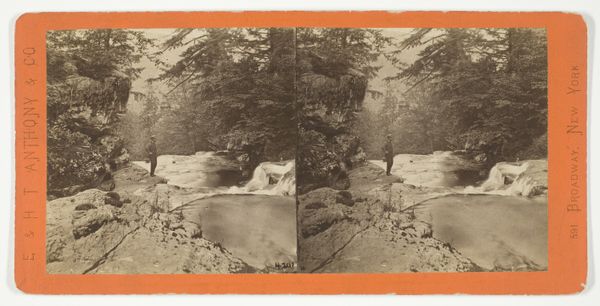
Utah Ute Indian and Lady "Courting" in N.E. Utah, from the U.S. Topographical and Geological Survey of the Colorado River of the West 1871 - 1874
0:00
0:00
albumen-print, print, photography
#
albumen-print
#
portrait
# print
#
photography
Dimensions: 11 × 7.7 cm (each image); 11.1 × 17.6 cm (card)
Copyright: Public Domain
Editor: This photograph, titled "Utah Ute Indian and Lady 'Courting' in N.E. Utah," was taken between 1871 and 1874 by John K. Hillers. It’s a captivating image that makes me think about documentation. I'm struck by how composed the subjects appear and how the landscape sort of merges with them. What do you see in this image? Curator: The figures blend into the scenery. Notice how the fringed clothing mirrors the arid vegetation? They’re *of* the landscape, and it resonates on multiple levels. It speaks to a lived relationship with the land, an interwoven existence rendered with careful compositional framing. Editor: Could you tell me more about how it creates the idea of existence? Curator: Look closely; the composition directs our gaze, subtly, but deliberately. It’s less about ‘recording’ and more about distilling cultural memory, layering indigenous life onto this emerging medium. Hillers offers us access to more than just an image. It offers a record of symbols. The woman, in particular, appears ornamented, like a character in a Byzantine icon, presented for viewers. What purpose might those details have served? Editor: It feels almost…staged? But I can see how the repetition of those visual motifs carries deeper significance about identity. Curator: Exactly! It's a powerful negotiation of representation, isn't it? We learn about Hillers’ record, but more crucially, we see how the Ute are consciously presenting *themselves.* The question is, do you find any Western influence in this photograph? What’s revealed through that encounter between cultures? Editor: It gives a new depth to portraiture, I had initially considered its Western composition but it feels now much more collaborative in defining its narrative. Thank you. Curator: Indeed, the layered narrative allows for a deeper consideration.
Comments
No comments
Be the first to comment and join the conversation on the ultimate creative platform.
